MAACQ Oase: Birdbead
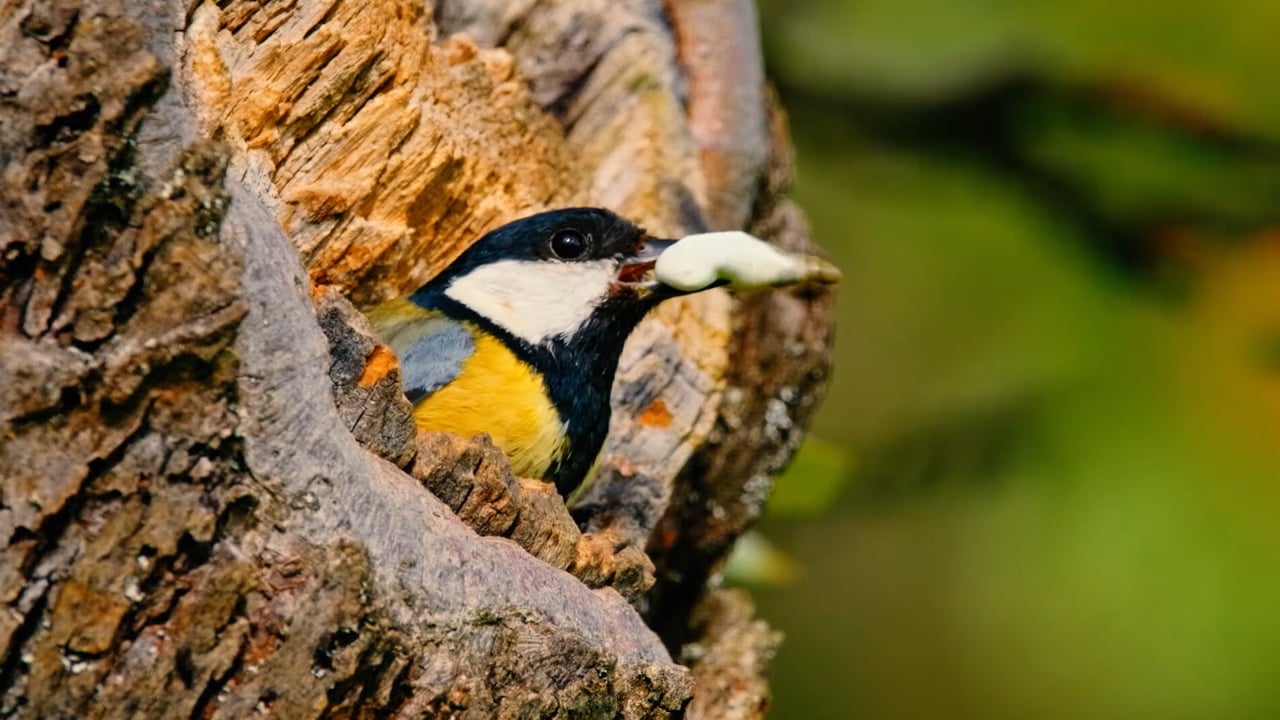
The MAACQ Oase Birdbead explores new and sustainable ways in which we can use design to address nitrogen induced soil acidification. With novel 3d printable materials it is possible to craft tailored solutions that can throw nature a lifeline. As the Birdbead degrades it releases calcium into the soil to create a local ‘oase’ of biodiversity. How can we help species survive our changing climate?
The acidification of Dutch soil trough industrial nitrogen usage is causing degradation of biodiversity and threatens wildlife. Birdbead is part of the MAACQ Oase project of Fillip Studios and Omlab. These companies aim to use circular biobased 3d printable materials containing calcium to reverse effects of acidification by printing sculptures. This material is mixed from calcium reclaimed in drink water decalcification (ontharding) and elements like cellulose sewage treatment.
Birdbead is designed as part of the design research process into the interactions between 3d printed sculptures with weather, wind, plants and animals while also researching novel methods for algorithm based 3d modelling.
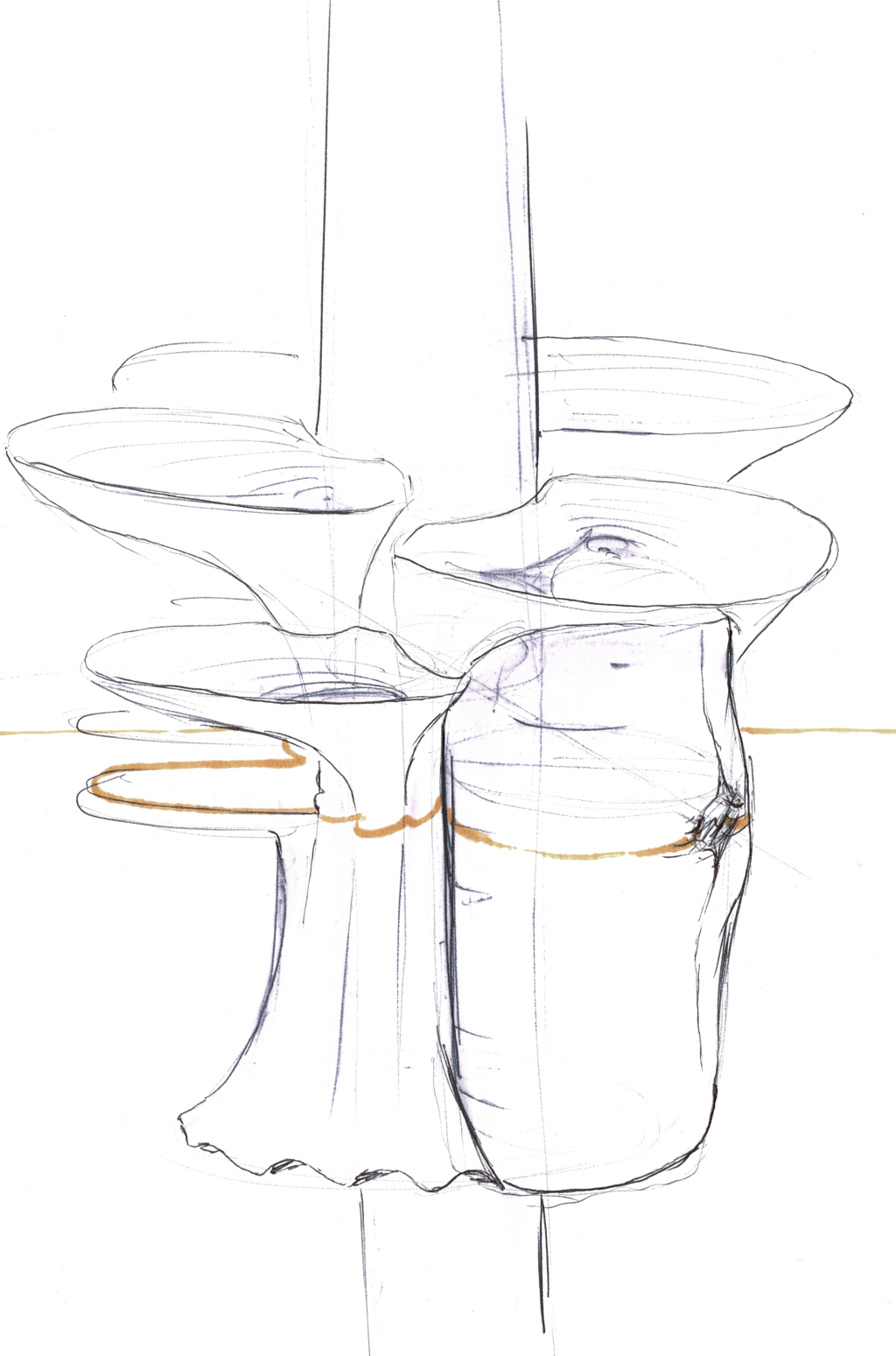
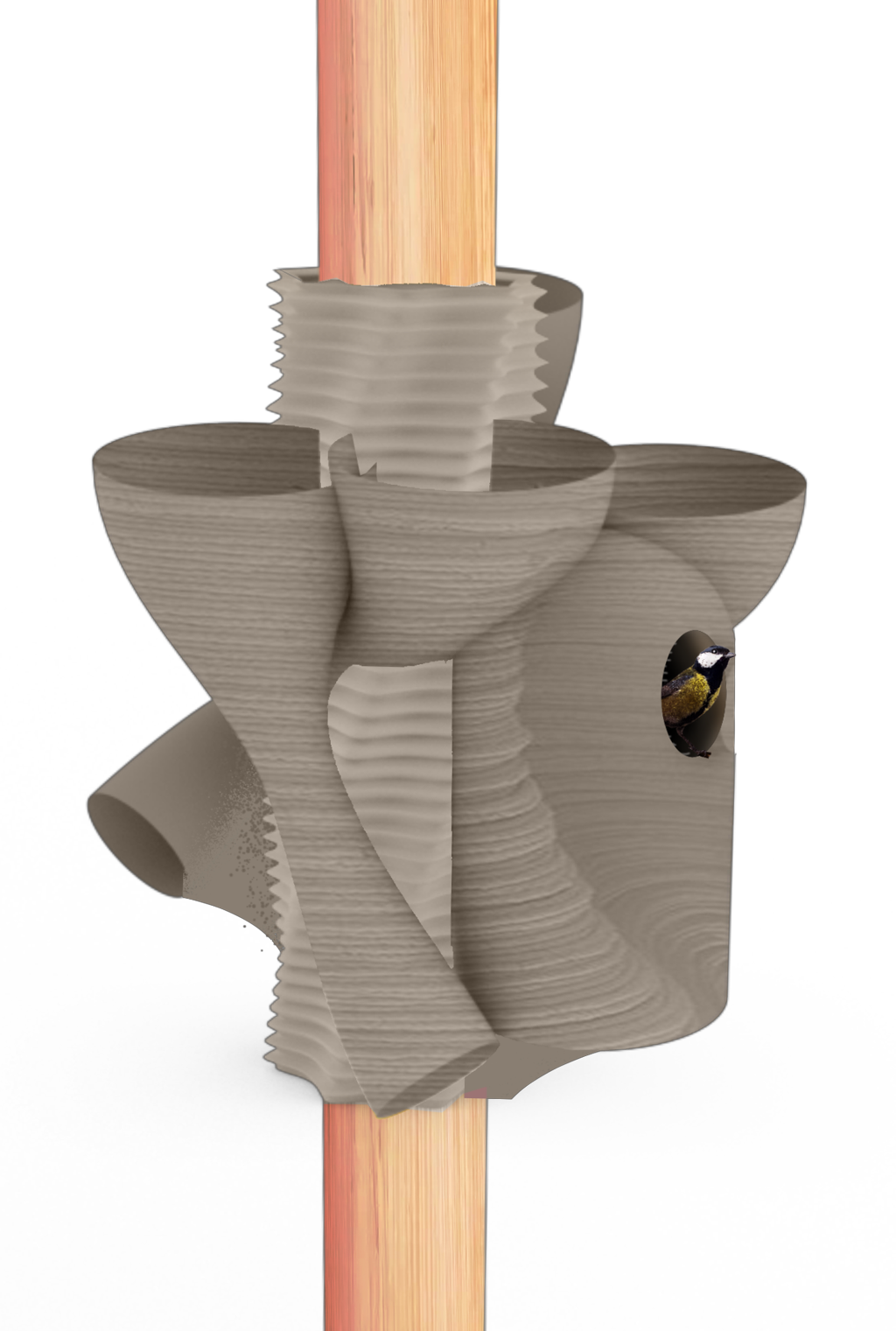
Birdbead is a birdhouse that erodes when exposed to water. The tubes and the inner structure are made to guide rainwater away from the birds, so that their home is the last feature to go. During the erosion process the layers of Birdbead fall away to reveal new textures and shapes to make the sculpture dynamic. The gradual release of calcium is more effective at sustaining biodiversity than some of the helicopter based dumping techniques used in Dutch nature reserves right now. The entire structure is developed so that it can be printed in one continuous thick line.
Like mushrooms, MAACQ Oase aims to enrich soil biodiversity nature, therefore the shaping of Birdbead was inspired by ‘elvenbankjes’.
The Birdbead is based on a shape defining algorithm. In this algorithm some key measurements of the model can be adapted and tweaked to suit the needs of different species. Some birds prefer a specific shaped entrances for example. This nest is configured to suit the needs of the ‘great tit’ (Koolmees), which has been heavily afflicted by acidification.
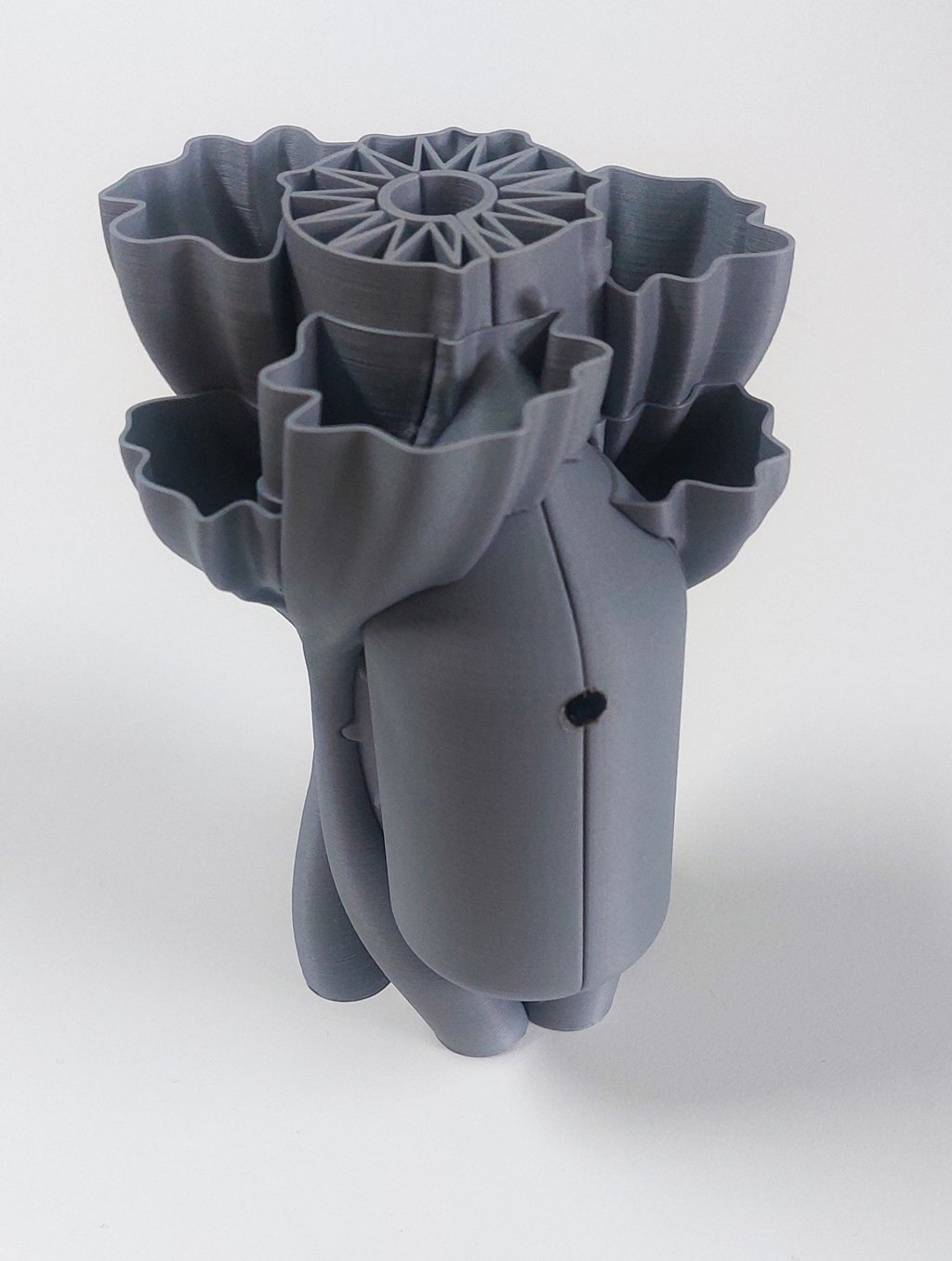
The Birdbead looks at the ecological processes disturbed by human influence and brings together key elements of the problem; water, minerals and biodiversity. But developing a product that is safe to implement in nature requires extensive knowledge about the natural processes. The Birdbead enables research into the interactions between nature and future MAACQ Oase products. The design positions itself between the envisioned climate future of Fillip Studios and Omlab and the current technological possibilities. The limitation of the 3d printing technology to produce a single product at a time enables variation and exploration. In this way it is demonstrates how small scale development enables new innovations to arise.
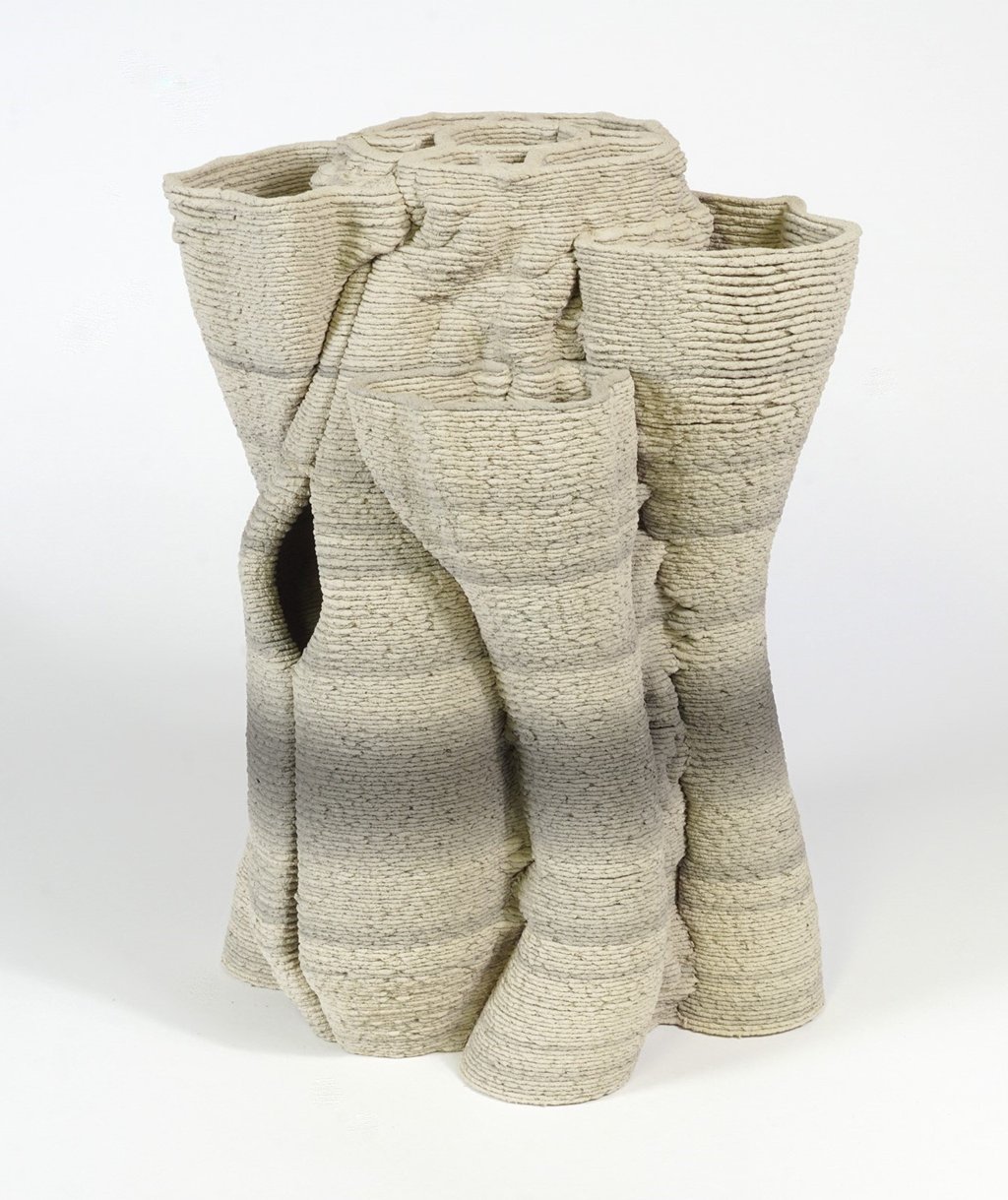
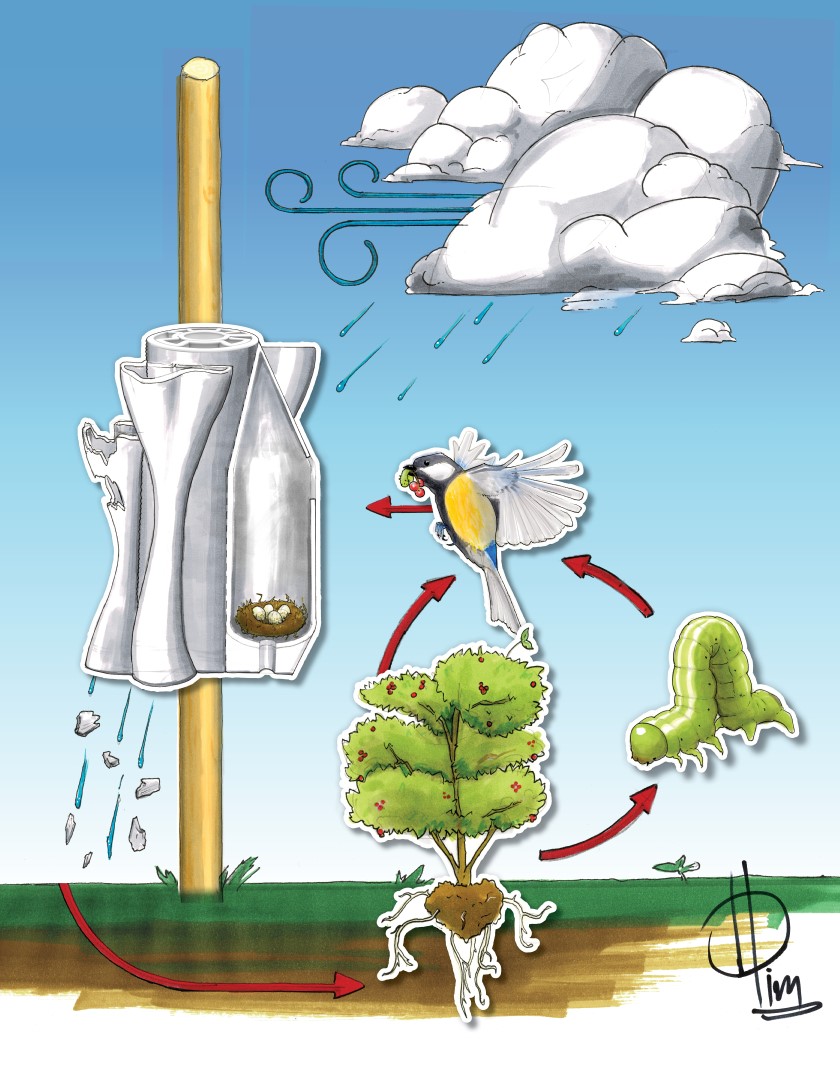
Share
Contacts
- -Pim van Everdingenptcveverdingen@gmail.com
- -Fillip Studios
- -Omlab
